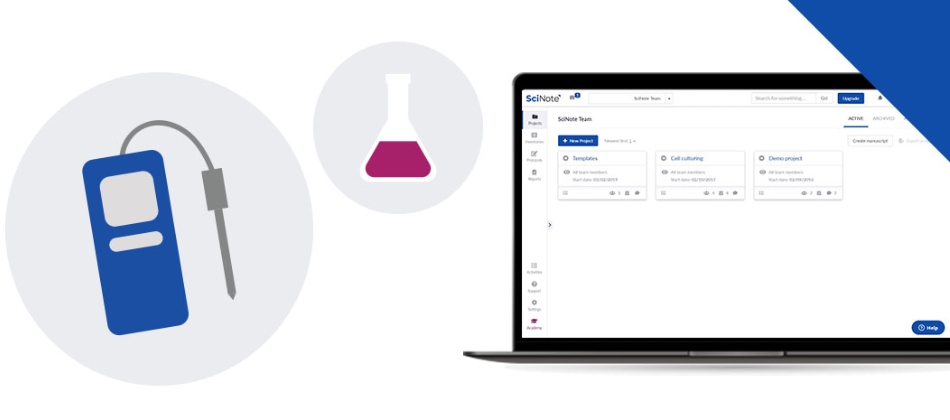Tips for Using Smart pH Meters with Electronic Lab Notebooks
![]() 2 min read
2 min read
Think of the tests that you tend to run in your lab daily, or even many times per day. Now think about the amount of data that is generated from these routine tests. It’s a lot, right?
Fortunately, a combination of the rise of the internet of things and electronic laboratory notebooks (ELNs) makes managing all this data easier than ever to work with. Devices that communicate within and between networks have already begun to permeate the laboratory landscape. These “smart devices” offer increased collaboration and traceability though sharable data and intelligent troubleshooting.
Even pH meters, some of the lab standbys that we don’t typically associate with cutting-edge innovation, are in on these trends. Smart pH meters, such as Hanna Instruments’ HALO, work seamlessly with electronic lab notebooks to help you manage and share large quantities of pH experimental data. These meters can even turn your phone or tablet into a powerful research tool.
We have put together a few tips on how you can integrate smart meters with ELNs to improve your data quality and traceability.
Use bulk data transfer to track trends easily
For many, managing and processing all the data that you get from running an experiment is one of the less exciting parts of their day. It doesn’t have to be that way with smart meters!
Instead of plotting massive amounts of data into a spreadsheet or a paper notebook, you can simply let the smart meters populate a table of values instead! Then when you are ready, simply attach them to the relevant experiment workflow on your ELN. You can even track changes over time and save your notes and observations on any samples that stand out.
Of course, for those that do enjoy managing large quantities of data, pairing smart meters with ELNs allow you to collect and organize more data than ever.
Maintain traceability with protected data
Data security and traceability are serious matters. We can all agree that any steps where we can avoid human errors in data transcription and execution, the better. This is one aspect where ELNs really shine- we know when data is placed onto the ELN that all changes can be accounted for. But, what happens to the data before it lives on the ELN?
Smart meters help close the loop on data traceability. From the beginning of collection until it is ultimately archived, data is safeguarded against tampering. Look for a device that offers an export as a pdf to a secure file depository. From there, it is a simple matter of adding it as a datasheet to your experiment on the ELN. It’s important to use a platform that offers secure usernames. This way, you can know exactly what your team members upload.
Use diagnostics to keep everything running smoothly
There is nothing worse about being at a dead end in a project due to equipment issues. With a smart meter, you will know exactly what’s wrong with your meter before you get sent off track. This could be a missed calibration, contaminated standard, or even if you need to clean the sensor. Maintenance and diagnostic information can be placed in a log in your ELN to notify your project members that all equipment is cared for.
Of course, this isn’t these are the only things that help keep your routine monitoring running on track. Smart meters like the HALO Bluetooth pH meter can provide application-driven design and easy integration with ELNs, such as sciNote.
How do you plan on using smart devices to further your research and project goals?


![[Video] Optimize Your Research Methods with Protocols.io and SciNote blog](https://www.scinote.net/wp-content/uploads/2020/08/Video-Optimize-Your-Research-Methods-with-Protocols.io-and-SciNote-blog-80x80.jpg)
